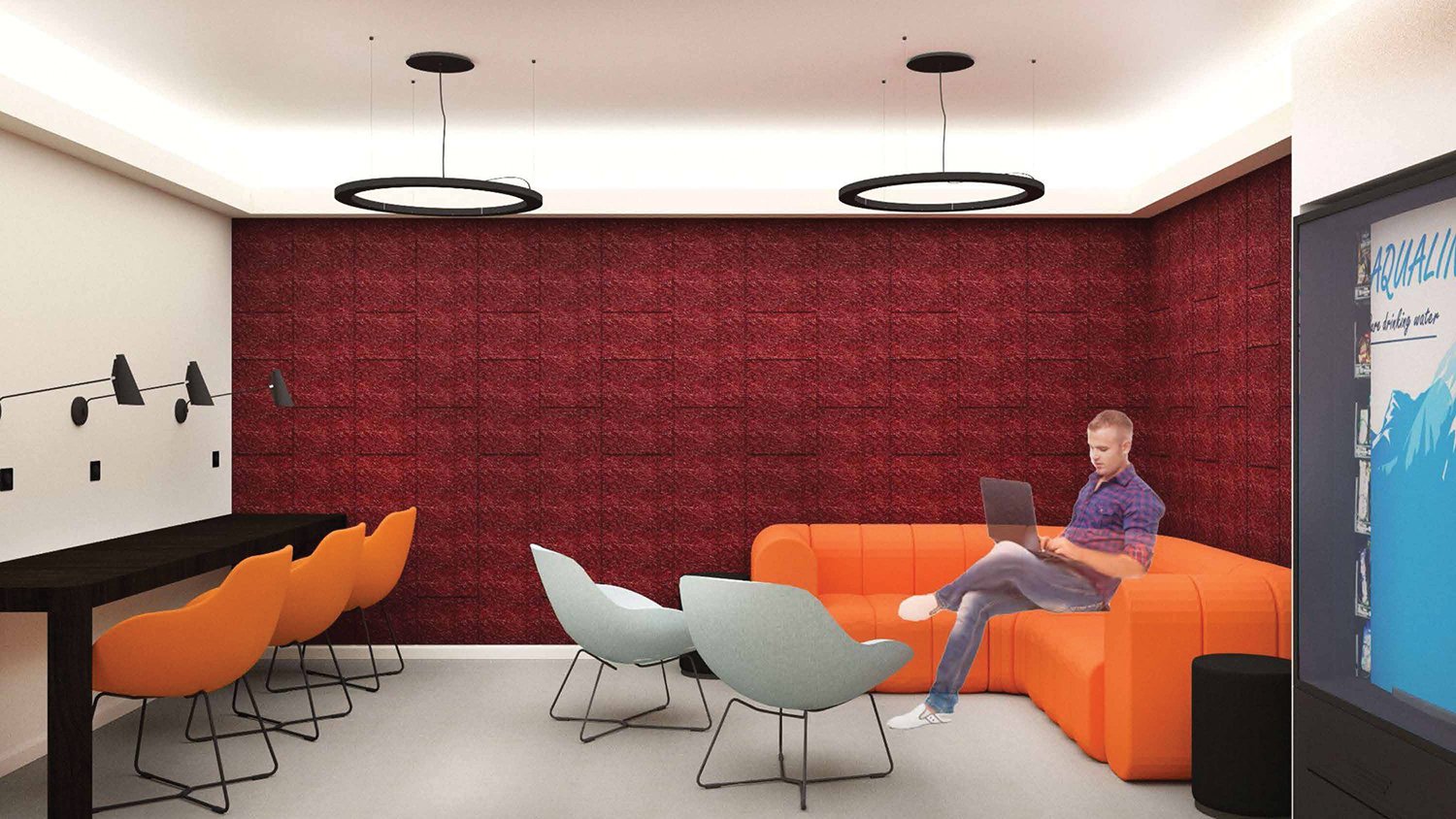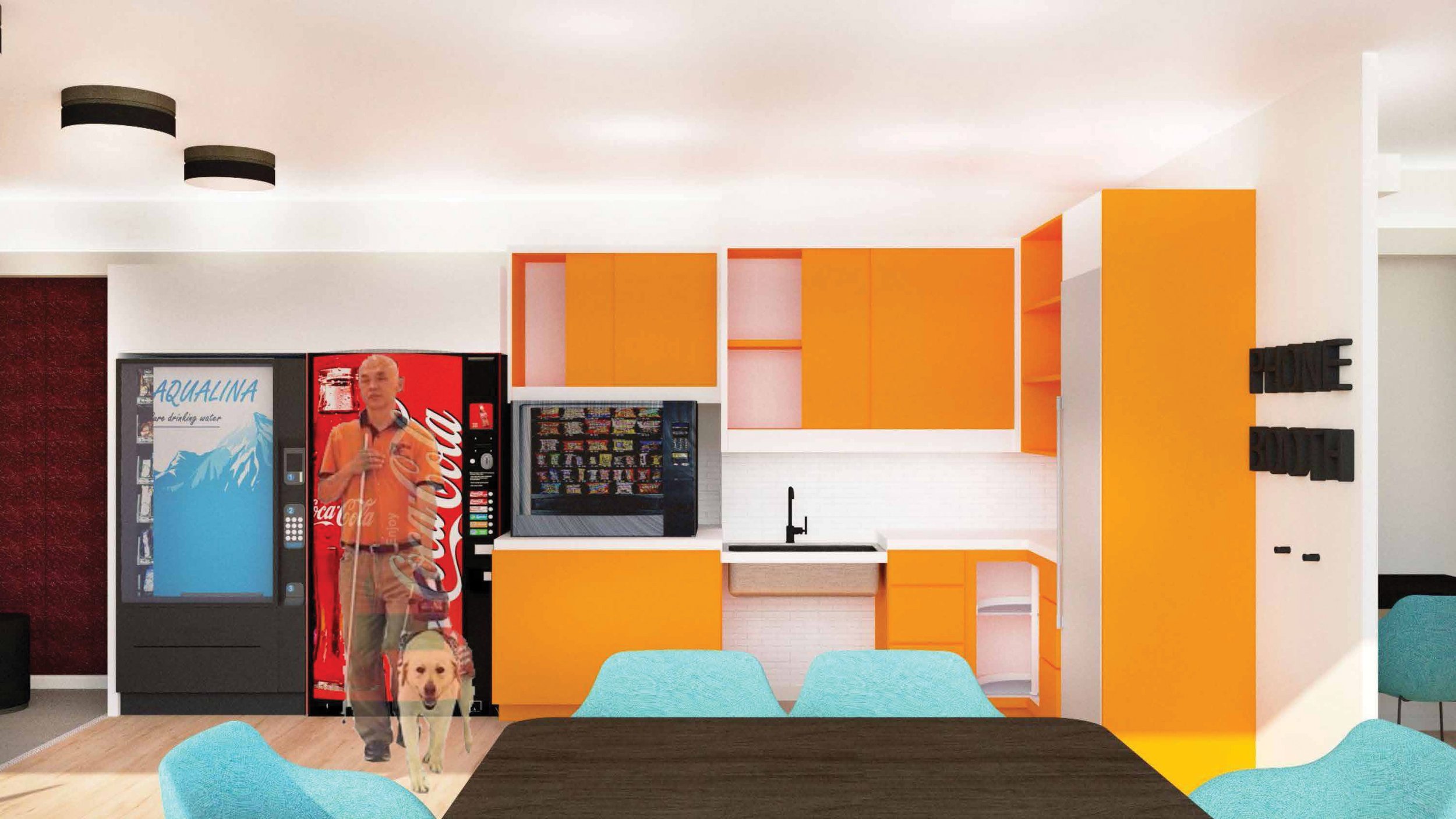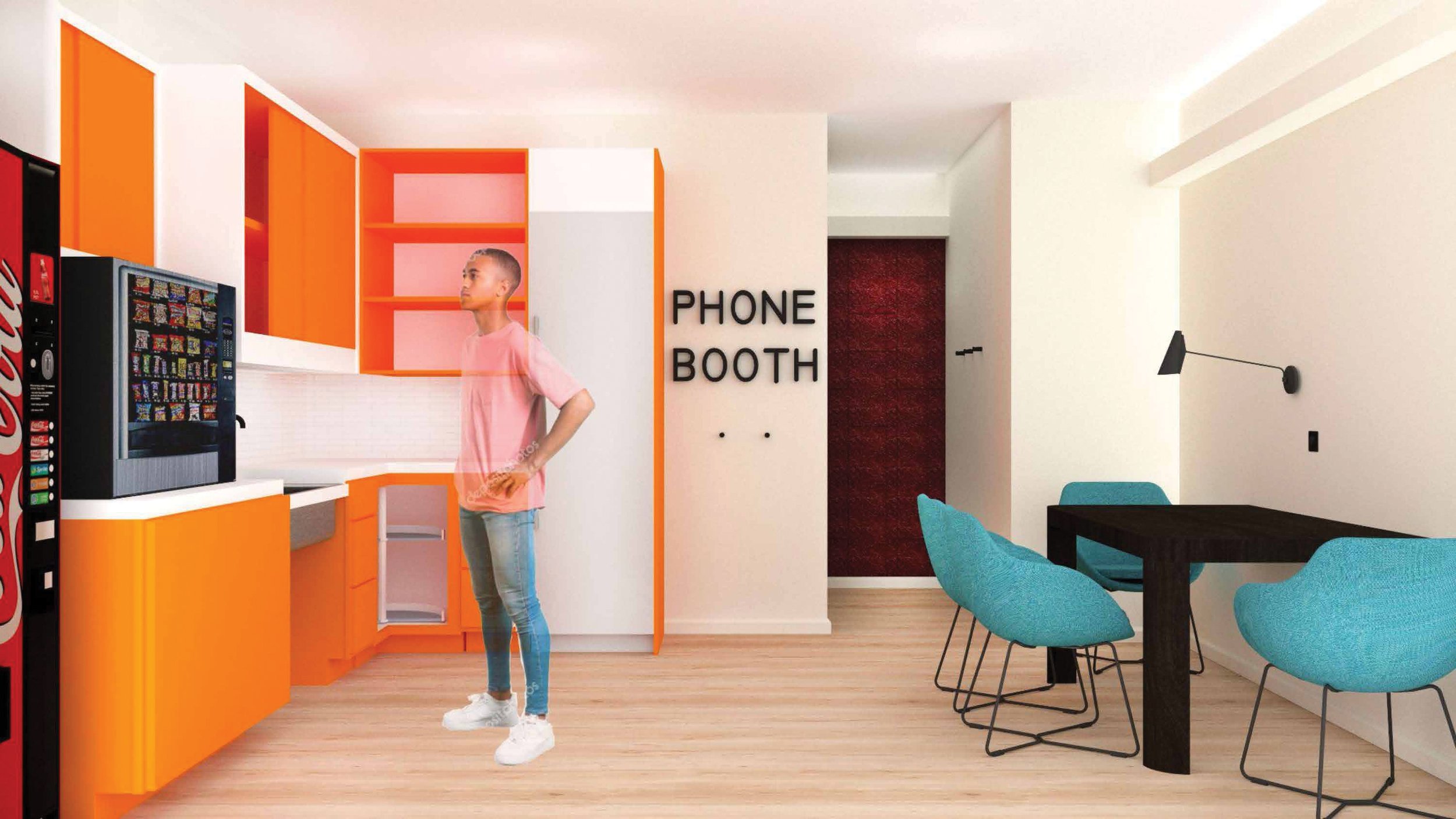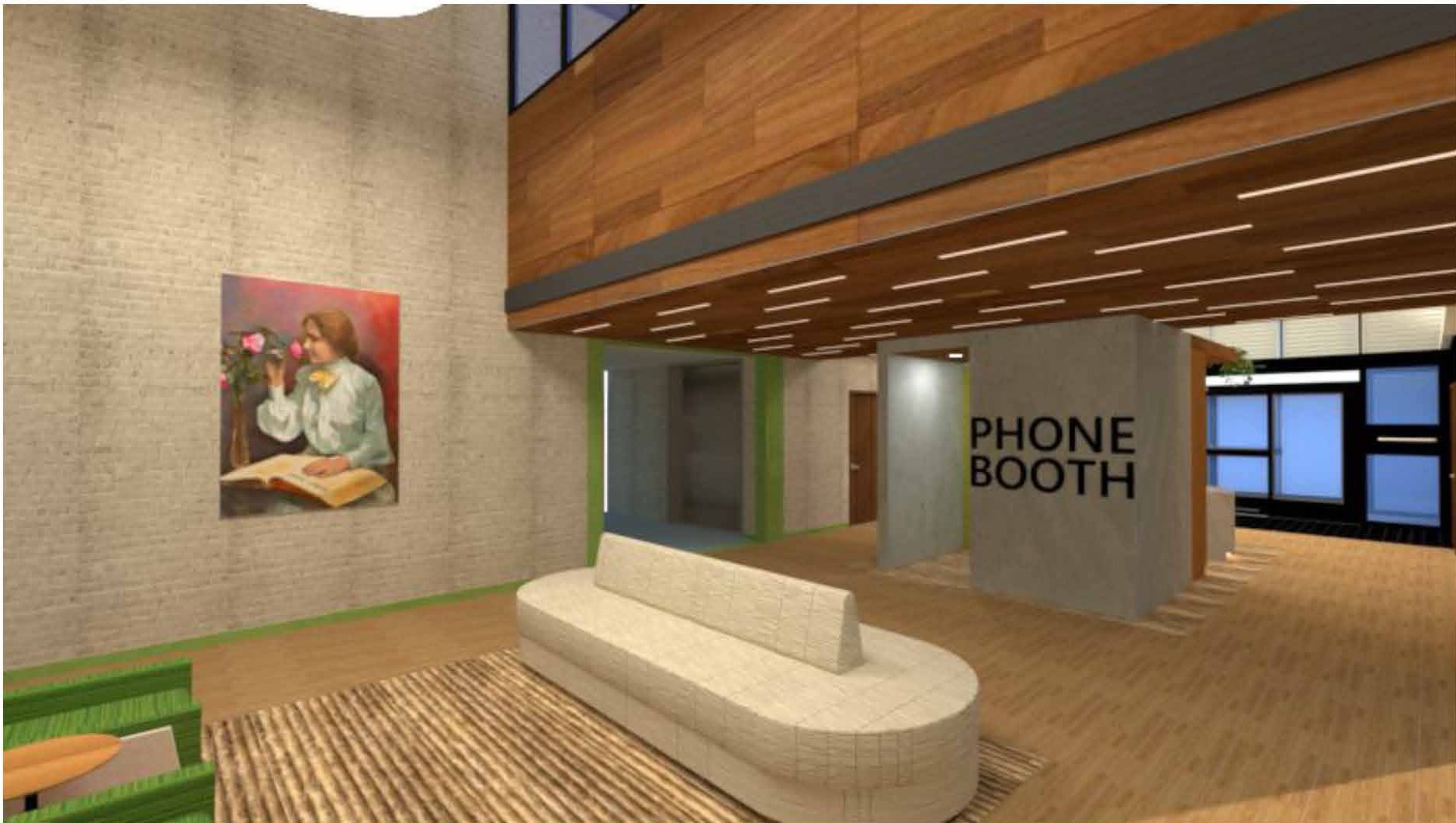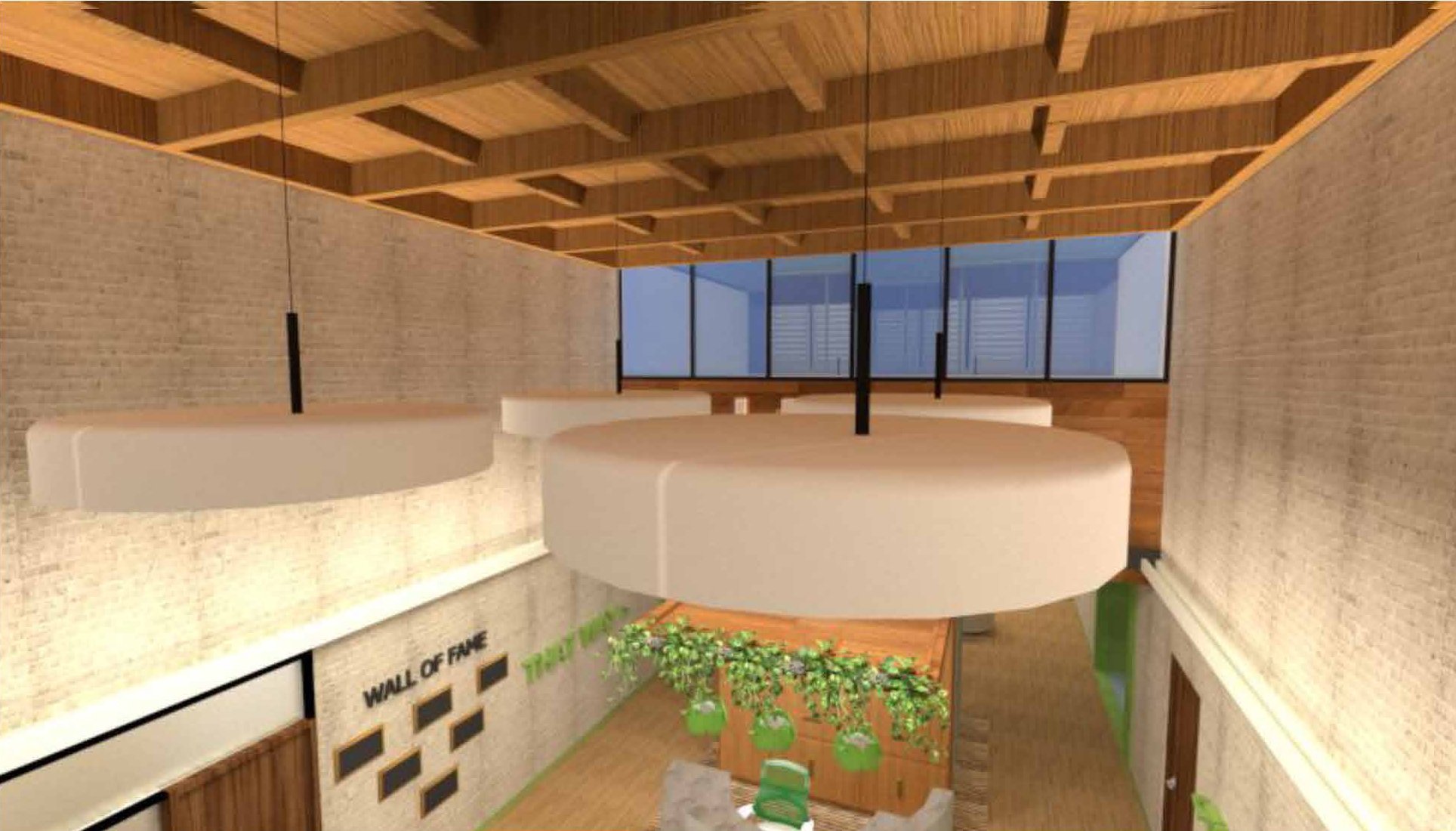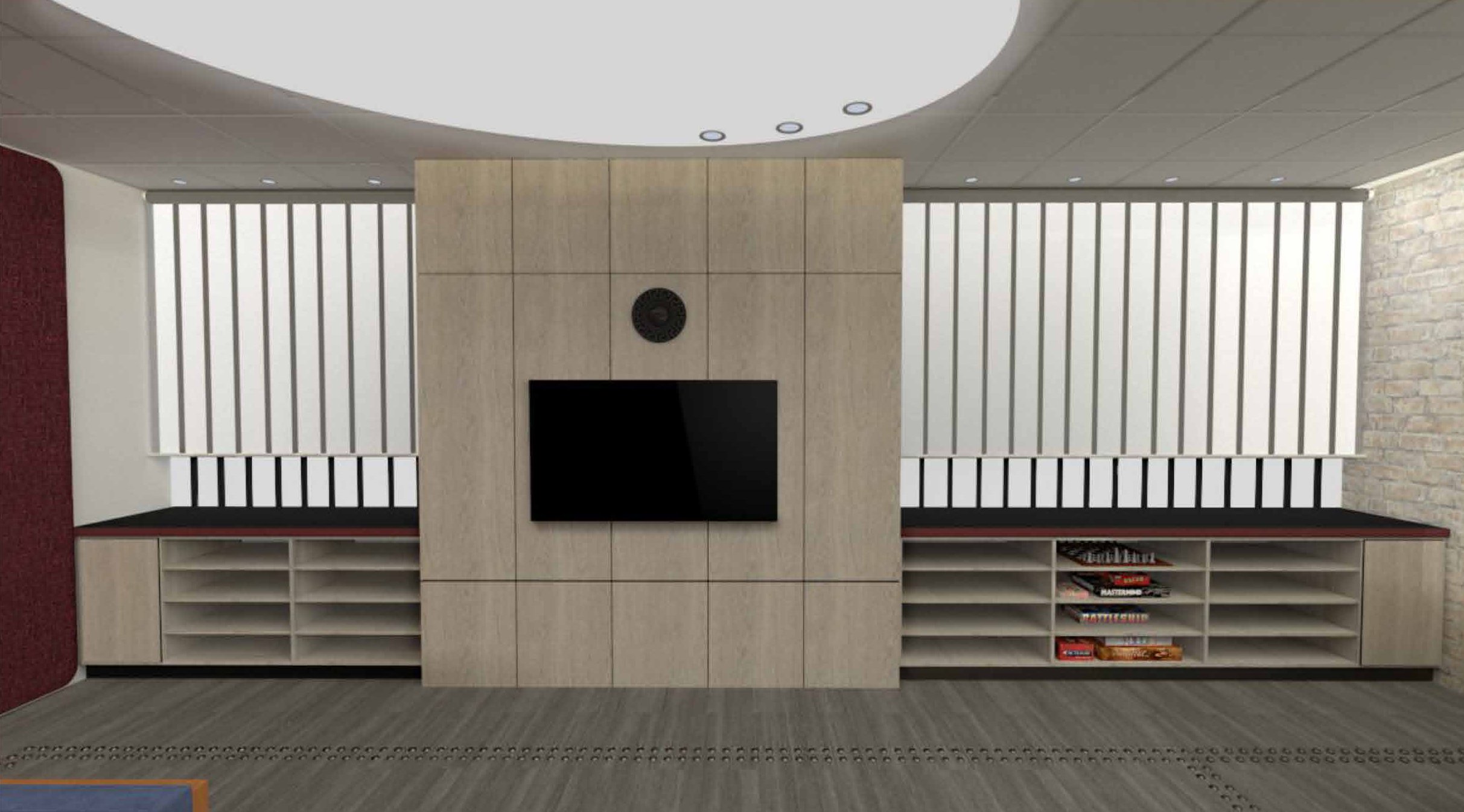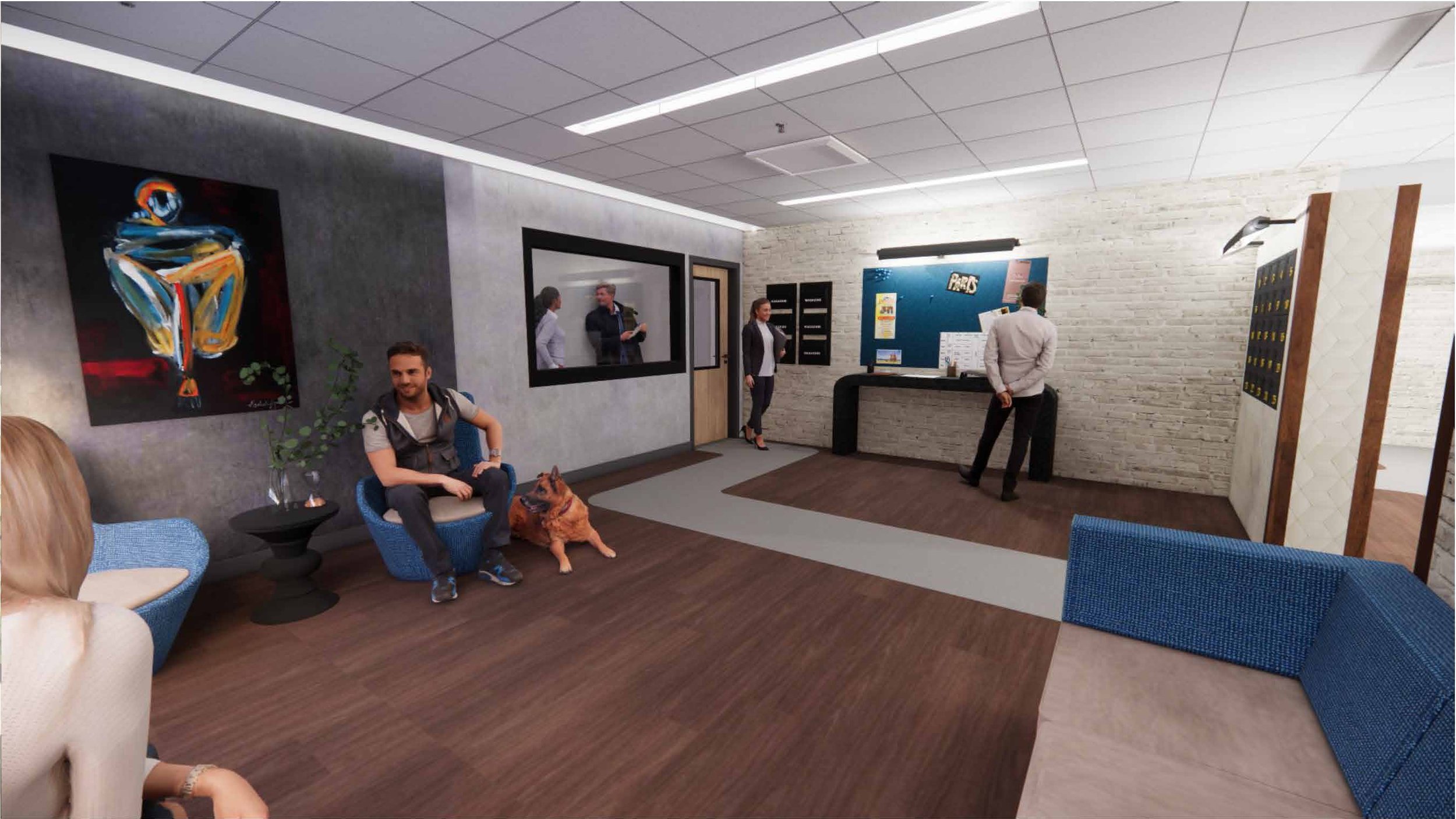Designing for DeafBlind Clients
Service Learning Changed the Way These Designers Approach Interiors
During the summer of 2021, twelve MFA1 students in NYSID’s summer service learning studio were tasked with designing spaces for the Helen Keller National Center in Sands Point, New York. The requirements of the client were complex and challenging. The designs from the students are elegant and innovative.
“People assume that total freedom makes designers more creative,” muses Terry Kleinberg, AIA, the faculty member who plans and teaches NYSID’s summer service learning course for MFA1 students. “But constraints can lead to creativity. This summer, my students had to work under so many constraints, and I was blown away by all they absorbed and incorporated without sacrificing good design.” The students were challenged to meet the needs of end users who are some combination of partially, or fully, hearing and vision impaired at the Helen Keller National Center. The facility serves as the national headquarters for Helen Keller Services as well as a residential campus and vocational rehabilitation program for youth and adults who are DeafBlind. People come to the residential training program to gain or regain skills for independence and employment. It’s a place that transforms lives.
The student designers had to take into account that some of the residents are young people who were born with vision and hearing impairments, and others are older people who have lost their sight and hearing with age and might use wheelchairs or walkers. Furthermore, the client didn’t want navigation to be too easy, because the point of the Helen Keller National Center is to train people to function in the real world. As is the case with so many nonprofits, the existing interiors of the Helen Keller National Center are not optimized for the vital services provided there. Through NYSID’s unique service learning program, students were able to offer pro-bono interior design to this nonprofit. They were drawn by the opportunity to do good and to learn about accessible design from engagement with a real client. The NYSID team consisted of four groups of three designers, each assigned to re-envision a different space in the Helen Keller National Center. Atara Gastwirth, April Podlaski, and Kiki Sui proposed a design for the lobby of the training facility; Rebecca Lipschitz, Louis Lu, and Winnie Wu proposed a design for the lobby of the dormitory; Sherry Guo, Ann Rietmann, and Kylie Whitehouse proposed a design for the dormitory lounge; and Praveena Aleti, Julianne Daly, and Felicia Gordon proposed a design for the training facility lounge. In the words of participating student Gordon, “Designing for a specific group rather than a group-at-large is what really expanded my knowledge of accessible design.”
The eight-week course began with a deep research phase that involved presentations from the NYSID librarians, student research projects that were shared with the whole group, and interviews with all of the stakeholders at the Helen Keller National Center. Over the course of the engagement, the student designers were able to deliver two schematic design presentations to both staff members and residents via Zoom and receive feedback before their final presentations. Staff participants included the Helen Keller Association’s orientation mobility specialist, low vision specialist, accessibility specialist, audiologist, coordinator of vocational service, supervisor of independent living, and executive director, among many others, and the students got feedback on their work from all of those perspectives. Many of the staff participants are on the DeafBlind spectrum, so there were interpreters who spoke for those who signed, signed for those who spoke, and signed directly into the hands of people who could neither see nor hear. Some of the NYSID students also did an in-person site visit to take measurements. Shaun Fillion, director of NYSID’s Master of Professional Studies in Lighting Design, and Eric Cohen, a NYSID faculty member, provided guidance and guest criticism to the student designers.
“NYSID does a really good job of incorporating accessible design into all of our studios, and because I had this previous experience of ADA standards, I thought I had a handle on it,” says student Kylie Whitehouse. “But hearing the personal perspectives of our clients at Helen Keller Services opened my mind to what this group needs to feel normal, comfortable, and accepted in the world. It was incredibly humbling to realize these people who need thoughtful design more than anyone else, were not getting it anywhere. Our project became so much more than meeting the requirements of clearances and standards. I was motivated to deliver a design that made my clients feel safe and at home in their communal space.”
The Right Seating Can Relieve Social Isolation
NYSID student April Podlaski said, “I learned how much social isolation people who are visually and hearing impaired can suffer because it’s so difficult to interact with other people. The inability to communicate can have a profound impact on their mental health. This touched all of us.”
Adds Kylie Whitehouse, “You need to understand the psychological and anthropological aspects of the way people on the DeafBlind spectrum communicate with their hands. They need space in order to have social interactions.” The NYSID students had to set up seating in such a way that hearing impaired people with some vision could have an American Sign Language (ASL) interpreter sitting in front of them. They also had to set up seating such that it worked for someone who was fully deaf and blind, who would need an interpreter to sit beside them and sign directly into their hand. The designers had to create backdrops with contrast to all skin tones so that signing hands would be visible to people with low vision.
Felicia Gordon and her team members, Praveena Aleti and Julianne Daly, created a design for the training center lounge. They were challenged by the client’s request that they increase the seating capacity of the room so more people could fit in, yet also create lots of space around each seat for ASL interpreters and even Seeing Eye dogs (and their tails). Says Gordon, “The solution was moveable and adaptable furniture. We made it easy for them to move furniture to form places for conversation and allow for wheelchairs to be added. The furniture we specified is on pedestals, and the chairs swivel. We specified custom tables built in from the wall. Originally, the tables had no legs, but we learned from client feedback that people who use canes to navigate can’t have furniture with ‘voids.’ They need legs on the furniture so they can perceive the boundaries of the furniture, so we added those.” Gordon and her team also added burgundy acoustic paneling in the “quiet reading zone” of their space because the backdrop stands out against every skin tone and makes ASL more visible to people with partial sight.
The Wrong Light Can Distract
Designers tend to think of bright sunlight as a boon to a room, but not for this community. “Direct sunlight really bothers the blind and partially blind community that lives there,” observed Kylie Whitehouse. “It’s a huge distraction when they are trying to navigate and communicate. Glare off surfaces is even more distracting.” In their design of the dormitory lounge, Sherry Guo, Ann Rietmann, and Kylie Whitehouse were stuck with two huge, striped windows that were built into the envelope of the building, so they specified a special anti-glare film for the windows, and added shades to mitigate direct sunlight yet still provide a bit of light to allow people with some vision to sense the parameters of the room. They specified flooring that would not reflect the light from the windows and cause glare.
Non-visual Wayfinding
When one thinks of wayfinding in design, it’s usually of visual cues like signs and graphics that communicate how to move through a space. The students in this service learning course had to build in tactile wayfinding, and also set up the space in zones, grouping by the function of the space, so that it would be logical to navigate without sight.
In the proposal for the dormitory lounge, the designers created clear circulation in a round path around the seating area. They used flooring with two rows of raised pegs that could help someone with low or no vision follow the round path around the room. They selected what Kylie Whitehouse calls “huge, fun, cheeky graphics” on the recycling containers to communicate the function to low-vision users, but also specified braille on the countertops for those with no vision.
The designers of the training lobby had to completely rethink the layout of the space. In the original space, the front desk was built into a wall beside the entrance so new residents would enter, walk right past it, and immediately get lost. “What we did is move the reception desk to the center of the space because this is the more traditional setup and the client wanted to create a space that mimicked everyday life to prepare their residents for life out in the world,” says April Podlaski. “We used tactile carpeting underneath the reception desk so anyone using a cane could tell when they were approaching a space intended for a different use. The rest of the floor is a wood-look vinyl that helps reduce glare.”
The designers of the dormitory lobby had to deal with challenging wayfinding problems and difficult glare caused by natural light. They introduced a tactile and acoustic wall with integral lighting and increased the ceiling lighting at the entrance to improve wayfinding and to create a transitional lighting zone for eyes adjusting to coming inside in strong daylight.
The Client’s Response
Susan Ruzenski Ed.D., CEO of Helen Keller Services, says she will use the design proposals provided by NYSID to fundraise for the build. She intends to make the proposals a reality, because the DeafBlind community she serves requires the facilities the student designers imagined. “The designs were truly beautiful, yet brought functionality into the space. Considerations for access and communication for the diverse community of DeafBlind learners at HKNC were taken into account,” she says. “The modern designs will give our living and working environments new life.”
Toward Universal Design
Universal design is the concept of designing inclusive spaces that accommodate everyone. Terry Kleinberg feels her students moved much closer toward universal design through the specificity of their planning for this community. As America ages, huge portions of the population are somewhat hearing and vision impaired, and everything these students learned will make spaces more welcoming to more people. Says Kleinberg, “Something as simple as understanding how distracting a water element in a gathering space can be for someone with hearing impairment will impact the decisions these designers make.” She believes that by challenging these students to strip away the visual aspects of a design, the clients at Hellen Keller Services forced them to focus on “the logic of space use and function.”
Why Choose Service Learning?
NYSID requires all MFA1 students to participate in summer experiential learning. The options include this service learning studio, an internship, an independent study, or travel study. The service learning program has existed since 2015 and, in years past, NYSID students have designed the interiors of New York City police stations; domestic violence residences; a counseling center and offices for Safe Horizon, a nonprofit that provides services for victims of violence; and a nonprofit optometry center and teaching hospital for SUNY College of Optometry. Nonprofits are rarely flush with funds, so often the design proposals from NYSID students are used to fundraise. The Safe Horizon center that NYSID students designed in 2020 recently received funding, and construction is underway. For a rising generation of designers inspired by service, the opportunity to have such a direct impact is appealing.
“Doing good work for an organization that needed it is what motivated me,” says Felicia Gordon. “What’s different about service learning is that you are not doing part of the design process. You are in charge of the whole design process. When the clients finally saw the end product and were really grateful. . . .well, that was the best part.”
Rendering by Natalie Odato
Accessible Design at NYSID
Making designs that are accessible to everybody is part of NYSID’s mission of diversifying interior design and expanding the communities it serves. Moreover, teaching ADA standards is a key requirement for NYSID’s accreditations from the Council for Interior Design Accreditation (CIDA). Says Ellen Fisher, NYSID’s dean and vice president for academic affairs, “Interior design is human-centered design. You must be inclusive to be human-centered.” Adds Barbara Weinreich, NYSID’s director of graduate programs, “Most standards of reach and dimensional norms for desks and chairs were based on military standards for white males, age 20, from World War II! They do not address lots of types of bodies. When you design for inclusion, everyone benefits.” Here are some key projects in the curricula of the BFA and MFA1 that challenge students to envision the spectrum of peoples’ abilities.
An Accessible Home for a Wheelchair User
Part of Residential Studio II, a third-semester course in the BFA and AAS, this project requires students to design a home for an individual in a wheelchair. Students are challenged to consider accessible doorways, kitchens that can be adaptable, turning radiuses for wheelchairs, countertops that can be altered for guests, accessible bathrooms, and more.
A Neurodiverse Daycare
Stefanie Werner, RA, owner and principal of DAS Studio and a NYSID faculty member, recently created this new curriculum for NYSID’s Contract III studio in the BFA program. Students are tasked with research on a particular syndrome or condition, such as autism, attention deficit disorder, or cerebral palsy. They design a daycare to meet the needs of children with the syndrome, and well as their siblings and other children in the community. “The idea is that it’s not just for the children with the syndrome. All children benefit from an integrated classroom,” says Werner.
An “Owl’s Nest” for Like-Minded Seniors
This project, a mainstay of the MFA1 program created by faculty member Eric Cohen, challenges students to create a residence for a cooperative community of elders organized around a common passion—music, for example. Students learn the practical details of designing for elders, such as the interactive effects of color and contrast, controlling temperature, and the effect of spatial organization on balance and perception.

